The second "H3," a next-generation heavy-lift launch vehicle, lifted off at 9:22:55 a.m. on February 17th from the Tanegashima Space Center in Kagoshima Prefecture. The launch was successful with two small satellites deployed into their intended orbits and a payload, a large dummy satellite, being separated as planned. The H3 is the successor to the "H2A," which has been in operation since 2001. However, considering the failure of the first model in March 2023, the attempt was initiated by undertaking precautionary measures. Since the beginning of this century when the H2A was developed, public and private satellite applications, including earth observation, security, positioning, and communications, have significantly advanced. The H3, which is equipped with new engines and is cost efficient, will become the new mainstay of Japan's space development and utilization.
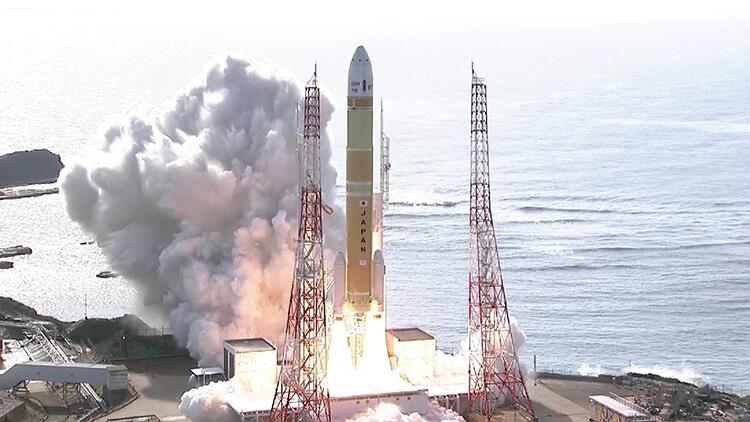
(provided by JAXA)
"The H3 finally made its first cry," "perfect success" says project manager with a smile
The H3 was launched from the Yoshinobu Launch Complex 2 at the Tanegashima Space Center. Approximately 5 min later, the first and second stages of the rocket were separated. Unlike the first rocket, combustion of the second stage engine for 11 min and 7 s was properly performed. Following this, satellites "CE-SAT-IE" of Canon Electronics Inc. and "TIRSAT" of the Japan Space Systems were successively deployed into orbit. After approximately 1 h and 20 min of the inertial flight, the second stage engine was re-ignited and combusted for 27 s. One hour, 48 min, and 14 s after lift-off, the payload was separated.
At the press conference, Hiroshi Yamakawa, President of the Japan Aerospace Exploration Agency (JAXA), said, "I have never felt so happy and relieved as today. We have made significant progress in securing self-reliance in the space activities of Japan and ensuring international competitiveness. It is a significant step forward."
Masashi Okada, JAXA's project manager who is leading the development of the H3, said while smiling, "The H3 has finally made its first cry. Today, a heavy burden was lifted from my shoulders. This is just the beginning. Now that H3 has entered space orbit, we will continue development so that it becomes a viable business." When asked about the score, he proudly replied, "Perfect."
JAXA had indicated in advance that they would not explicitly announce whether the launch of the second H3 was successful or failure, as the purpose of the launch was to verify the development of H3. Ultimately, the flight went smoothly and all payloads, such as satellites, were delivered as planned. When Okada was asked at the press conference to confirm whether the launch was a success or failure, he replied, "It was a success."
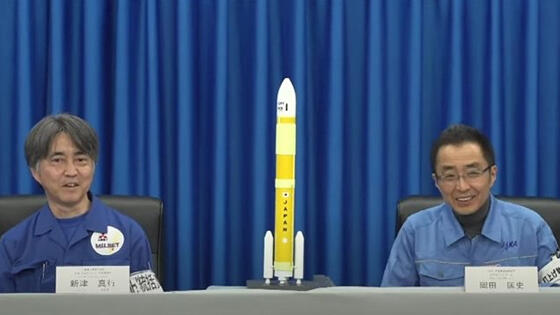
Taken from online interview screen
After the first model failed, countermeasures were taken for all three issues
The first model, which was launched on March 7th last year, failed because the second stage engine failed to ignite. The Earth observation satellite "DAICHI-3," which was on board, was lost. The cause was malfunction in an electrical system of the second stage engine. The first new heavy-lift launch vehicle in 22 years stumbled on its debut, a serious blow to Japan's space development and utilization.
JAXA, Mitsubishi Heavy Industries Ltd., and other companies have been advancing the investigation into the cause, and narrowed down the following three possible scenarios for the occurrence of abnormalities: (1) a short circuit occurred in the igniter of the engine, (2) an excessive current was generated when power was supplied to the igniter, and (3) an excessive current was generated in one of the two systems that performs various controls of the engine and its surroundings upon instruction from the computer, and this excessive current spread to the other fail-safe systems. In October last year, the Space Utilization Subcommittee of the Ministry of Education, Culture, Sports, Science and Technology complied this report, which including these contents. The report indicated that factors such as an emphasis on the track record of the equipment used for many years and the lack of countermeasures and confirmation caused the failure.
The government and JAXA decided to prioritize the early operation of the H3 without waiting to narrow down the cause to a single factor. In the second model, measures for preventing recurrence were implemented for all three scenarios. Specifically, these measures reflect the following: (1) reinforcing insulation of components of the igniter and conducting more thorough inspections, (2) selecting components to ensure that the voltage applied to the transistor remains within the rated range, and (3) removing the unnecessary "constant voltage diode," a component that may have been the cause, from the circuit as its absence does not cause any problem.
The same countermeasures were applied to the H2A with respect to the suspected common elements for the cause. Therefore, successful launches were achieved consecutively in September last year and on the 12th of January.
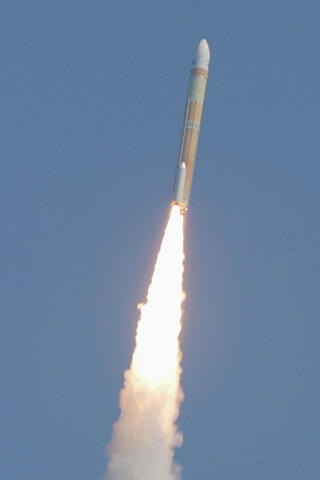
Photo by Naoki Koshidaka, Science Portal Editorial Office
Aiming to achieve performance improvement and cost reduction
The H3 Launch Vehicle is the successor to the H2A and the enhanced "H2B," which ended operation in 2020. H3 is a two-stage liquid propellant rocket, with the first and second models having a total length of 57 m and weighing 422 t, excluding the satellite. The maximum capacity of the H3 is more than 6.5 t (converted to launches in geostationary transfer orbit and at the equator), exceeding 6 t of the H2B. The H3 Launch Vehicle was jointly developed by JAXA and Mitsubishi Heavy Industries, Ltd. The total development cost amounted to 219.7 billion yen.
In addition to the newly developed first stage engine, efficiency was improved by extensively using consumer products used in automobiles, rather than space-specific components. The goal was to halve the launch cost, which is estimated to be approximately 10 billion yen for the basic model of the H2A. The H3 achieved improved performance and cost reduction, enabling it to carry government and commercial satellites, which have increased in size recently. It will also be used for launching probes for scientific purpose, transfer vehicles bound for the International Space Station (ISS) and for a lunar orbital platform, which is to be constructed.
The H3, along with the H2A and the small solid-fuel rocket "Epsilon," makes up the flagship rockets of the government. The first and second models were launched by JAXA as test models. However, in the future, like the H2A, they will be transferred to Mitsubishi Heavy Industries Ltd. and deployed commercially.
According to the schedule table of the government's Basic Plan for Space, the H3 is scheduled to launch three times in the next fiscal year, carrying the Earth observation satellite "Daichi-4," a defense communication satellite, and a Quasi-Zenith Satellite. The H2A will be retired after launching an information gathering satellite and a Global Observation Satellite for greenhouse gases and water cycle, respectively, in the next fiscal year.
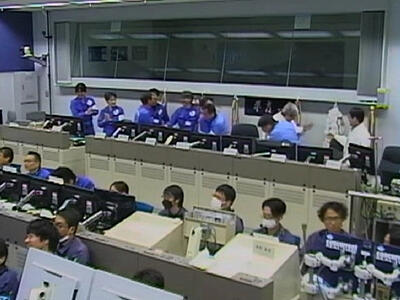
(provided by JAXA)
The highlight of the development, the first stage engine, has been a "success" since its debut on the first model
After the failure of the first model, attention was focused on the electrical system of the second stage engine, which was identified as the cause of the failure. However, while reviewing the development of the H3, the most significant highlight was the "LE-9," a first stage engine developed through a shift in design concept. The LE-9 functioned properly and was "successful" on the first model. The original combustion method of Japan, the "expander bleed cycle," that has been used in the second stage engine was adopted for the first time in the first stage engine. Compared to the "two-stage combustion" of the first stage engine of the H2A, the mechanism was simplified at a slight cost in fuel efficiency.
The basic principle of both methods is the same, pressurizing liquid hydrogen and liquid oxygen fuels using a pump before delivering them to a combustion chamber, and then exhausting the generated gas through a nozzle. In two-stage combustion, hydrogen is first burned in a secondary combustion chamber and the generated gas then drives the pump before being delivered to the primary combustion chamber, thus burning in two stages. This prevents fuel wastage, resulting in good fuel efficiency. However, this is extremely complex to control.
By contrast, in the expander bleed cycle, hydrogen is first expanded using the heat from the combustion chamber to drive the pump. As there is no secondary combustion chamber, the number of components can be reduced by 20% or more, resulting in lower cost and improved reliability. Furthermore, there is very little risk of explosion in the event of malfunctions. However, the hydrogen used to drive the pump is not delivered to the combustion chamber. Instead, it is expelled (bled) through the nozzle and discarded. Thus, in exchange for the cost of only 3% of the fuel efficiency, control can be facilitated.
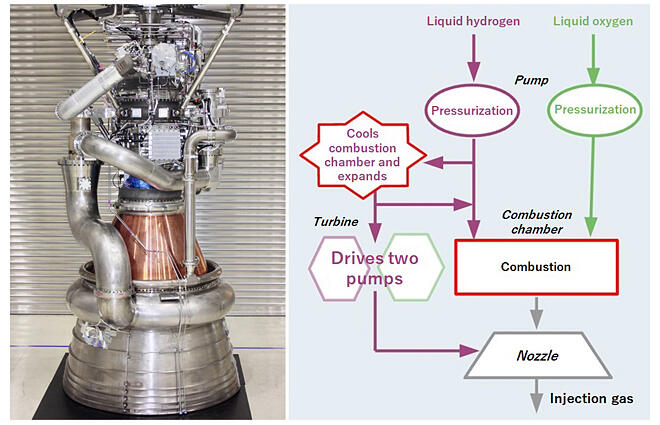
Diagram was prepared based on materials and interviews with JAXA and Mitsubishi Heavy Industries Ltd.
The development of H3 started in 2014. The original goal was to launch the H3 in FY2020, but the attempt was repeatedly postponed. Numerous small holes were found in the combustion chamber of LE-9 during a combustion test in May 2020, when it was believed to be nearing the final stage. Additionally, in January 2022, it was announced that abnormal vibrations were found in the turbine. A first stage engine must have an order of magnitude greater power than a second stage engine to overcome gravity and lift the launch vehicle. Although the launch of the first model failed, it is essentially worth noting that the LE-9 engine completed its task well.
I, the author, who covered the launch of the first model on-site, recall feeling surprised and a bit bewildered, not by the failure of the launch, but by the unexpected stumble of the second stage, which seemed to have fewer developmental elements, rather than the first stage.
In response to failure, plan to mount a large satellite was postponed
In response to the failure of the first model, the government and JAXA significantly revised their plans for the second model.
There are variations in the fuselage configuration of the H3, such as the number of first stage engines (LE-9) and auxiliary solid rocket boosters. Before the revision, the second model had a minimum configuration, which included three first stage engines and no boosters, and was planned to carry the Earth observation satellite "Daichi-4." This configuration was changed to adopt exactly the same configuration as the first model with two first stage engines and two boosters. This configuration maximizes the use of flight data from the first model and can be applied to various satellites.
To avoid the risk of losing another large satellite in the event of a launch failure, it was decided not to mount Daichi-4 and to use a dummy payload instead. Meanwhile, it was also decided to provide opportunities to use the H3 on the condition that it would not interfere with the purpose of the second model, which was to demonstrate the flight of H3, and was allowed to carry two small satellites free of charge on the condition of "no compensation in case of failure". The total weight of the two small satellites, structure for mounting them on the rocket, and payloads (approximately 2.6 t) was made almost equal to that of Daichi-3 (approximately 3 t).
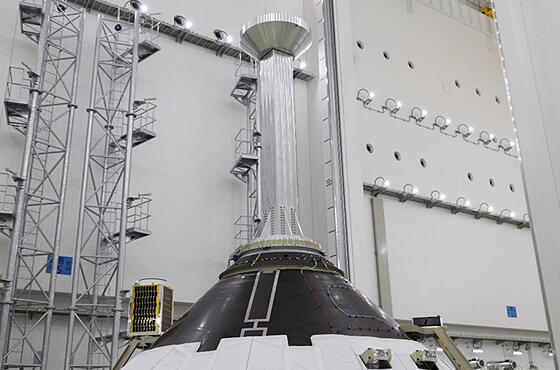
(provided by JAXA)
The launch of a flagship rocket, the last Epsilon-6, also failed in October 2022. Furthermore, in July of last year, an explosion occurred during a combustion test of the second stage engine of the improved model, "Epsilon S," which is still under development. Now that the launch of the H3 has finally succeeded, it is hoped that the development of a flagship rocket has turned the corner to recovery.
Europe and the United States also struggled in rocket development
It is not only Japan that has seen struggles with the development of heavy-lift launch vehicles. In Europe, the "Ariane 5," which led the global commercial launch market, ceased its operations in July of last year. However, its successor Ariane 6, which was originally scheduled for its first launch in 2020, has faced repeated delays and is now expected to be pushed back to this summer. This is owing to design changes, the impact of the COVID-19 pandemic, and engine combustion tests, which require time.
In the United States, the "Vulcan" rocket developed by United Launch Alliance, which also operates rockets like the "Atlas V," finally achieved its first launch on March 8th. The engine for the Atlas V was Russian-made. However, to end reliance on Russian engines, the Vulcan adopted an engine built by the U.S. company, Blue Origin, which resulted in a longer development time.
Okada expressed his honest opinion about the difficulties in rocket development, "It is a task of creating large-scale systems, so it is difficult to set a schedule. In the development of LE-9, which caused the delay (of the first launch of H3), I think we should have done more thorough research in the early stages. However, sometimes we do not see the problems clearly at the beginning and they become apparent only later."
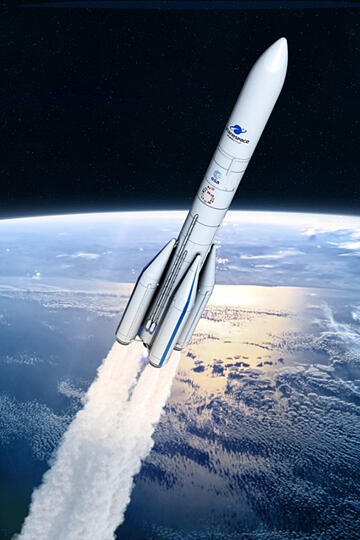
Provided by Arianespace
Shortage of rockets in the global market: Development of H3 is Japan's responsibility
In recent years, the "Falcon 9" rocket from the U.S. company SpaceX, which achieved significant cost reductions, has emerged on the market. In 2017, it successfully reused its first stage fuselage. The Falcon 9 now boasts an overwhelming market share and has become the "king of commercial rockets." However, it should be noted that Japan's flagship rockets, including the H3, occupy a slightly different position than the Falcon 9.
The most important role of flagship rockets is to launch government satellites, probes, and spacecraft, including those essential for national security and disaster prevention, using domestic capabilities without relying on foreign countries. However, for its survival, it is necessary to launch rockets frequently and maintain related industries. Public demand alone is not sufficient. Entering the market, i.e. undertaking business activities and actively securing contracts for commercial and foreign satellite launches is critical. A key aim of the H3 development with reduced costs lies here.
The success rate of Japan's heavy-lift launch vehicles, including the H2A and H2B, is among the world's highest at approximately 98%. Minimal delays for reasons other than bad weather have also been a strong source of appeal. The H2A has launched satellites and probes for South Korea, Canada, the United Arab Emirates (UAE), and the United Kingdom, and is gaining its credibility worldwide. It is important for the H3 to inherit these achievements and continue to build on its successes.
The use of satellites has increased dramatically recently, including a "satellite constellation," by which many satellites systematically cooperate. Nevertheless, since the invasion of Ukraine in February 2022, Russian launch vehicles, such as the "Soyuz" and "Proton," which were the main players in the market, have become unavailable, leading to a serious shortage of rockets in the global market. With the urgent demand for reliable rockets, it is the responsibility of Japan, a country of science and technology, to meet the global demand as the H3 continues to refine its technology.
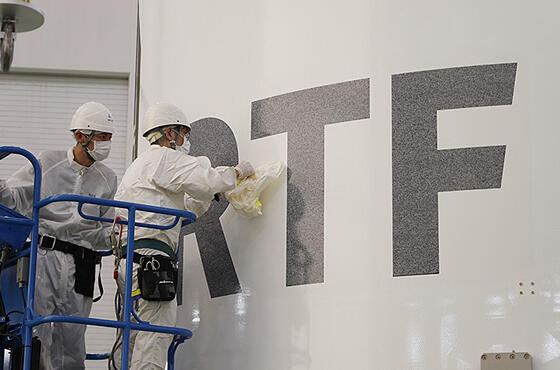
(Provided by JAXA)
(KUSAKA Takeo / Science Portal Editorial Office)
Original article was provided by the Science Portal and has been translated by Science Japan.




